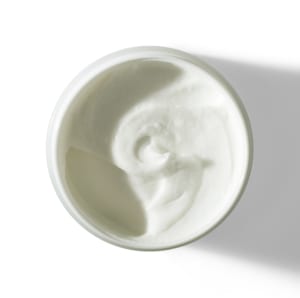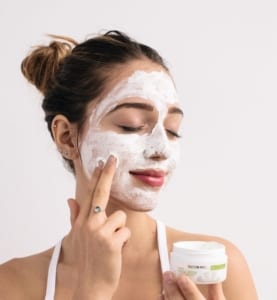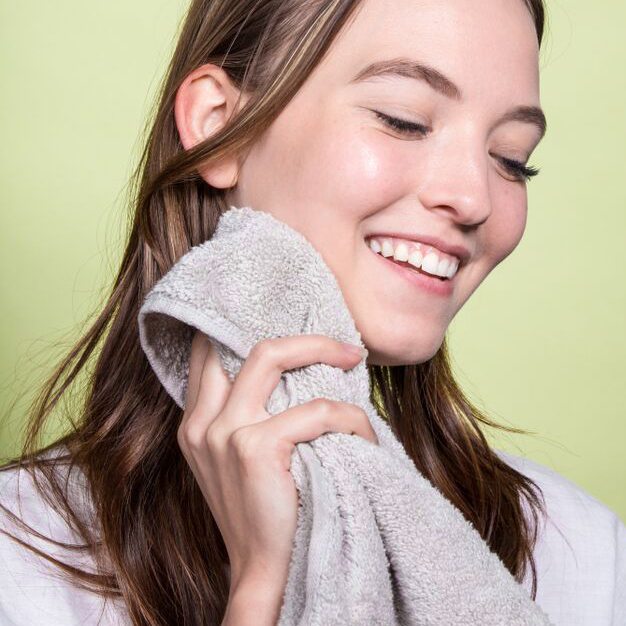With your optimal daily regimen identified, it’s time to take your skincare to the next level. Any tried and true skincare regimen demands a shake-up now and then to help us keep your skin GLOWING. We enlisted Dr. G to help us with upping the ante on our regimen.
How can I make my cleanser work harder for even better results at home?
Cleansing the face should happen at least once a day if not twice. Upon waking, washing the face will remove the residue from the applied night regimen. If you choose to cleanse in the AM, make sure to use a cleanser that won’t strip or dry the skin (i.e. Alcohol Free). Cleansing the skin at night is a must! No exceptions. The skin is exposed to a variety of environmental stressors and pollutants. Soot, car exhaust, sun, second hand smoke and many others can wreak havoc on the skin leaving a layer of dirt and free radicals. Makeup also needs to be removed no matter what. Sleeping in makeup is one of the worst things you can do for your skin. Clogged pores will lead to break outs and or rashes. By cleansing at night the skin is ready to receive and absorb any applied serums and creams.
***The skin has a very thin protective layer on the surface called theacid mantel. This layer is comprised of sebum from sebaceous glands, lactic acid and amino acids (from our body’s sweat). The ideal ‘balanced’ level is around 5.5, slightly acidic.
A great idea to make your cleanser work even harder is to mix it with your physical scrub. By mixing these products together you maximize on the effectiveness of both and also save a step in your regimen. Using a facial tool or brush with your cleanser can also help deliver better results.
Is there one texture of cleanser that’s best to use for a deeper cleansing treatment?
Texture is highly dependent on skin type and personal preference. When choosing a cleanser it is important to pay attention to ingredients. While some people prefer a cleansing balm, pay attention to ingredients, as these balms can be heavy and are not for every skin type. If you’re not sure where to start, try a gentle cleanser appropriate for all skin types. Our most popular cleanser is a gentle gel based cleanser, ‘Pure Start’. If you are typically dry or sensitive you have to be careful what types of ingredients you choose, stay clear of astringents, acids, sodium lauryl sulfate and alcohol. Over cleansing is never recommended as it strips the skin of natural oils which can cause an over production of oil/sebum and thus a breakout.
Should exfoliation always come after cleansing?
We believe exfoliation should always be the first step of a regimen. On non-exfoliation days (we recommend exfoliating 2-3 times per week depending on skin type) you can simply cleanse or use a targeted acid based cleanser (AHA Clarifying Wash). We recommend exfoliating first so that the exfoliation vehicles (crystals or acids) are able to remove and lift the dull, dead lackluster skin then the cleanser can wash it all away.
What’s the best most effective way to exfoliate?
Everyone should exfoliate their skin two to three times a week, unless they suffer from rosacea or eczema. Depending on the season and climate, exfoliation can be increased or decreased. Both manual and chemical exfoliation is recommended and dependent on results desired. If you are using a scrub (manual), you can cleanse after, which will ensure all the crystals are removed. Our ‘Doctors Scrub’ is an exfoliator that cleanses and aids in cell renewal by polishing away dead surface cells, leaving skin brighter, clearer and younger-looking. Formulated with line-filling Hyaluronic Acid, whichdelivers long-lasting hydration, Seaweedto nourish and Organic Red Tea Extract to provide antioxidant protection.

How can I use a mask to best effect? Should I layer them or is targeted masking a good idea? How often should I use a mask?
This is dependent on skin type and desired results. Look for multipurpose masks, which treat and soothe or hydrate. A purifying mask (Facial Detox Mask) works to draw out dirt and pore clogging debris to reveal skin that looks clear and appears flawless. These types of masks can be used all over the face a few times a week (for oily, acne prone skin), a few times a month for dry and sensitive skin or as a spot treatment whenever you feel a breakout coming. In clarifying masks look for ingredients, which soothe and calm such as Zinc Oxide, exfoliate and unclogs pores, such as Sulfur and a natural astringent to draw out oils such as Camphor.
We created an all in one mask, The Skin Balancing Mask to take the guesswork out of masking. This mask is a triple-tasker, which mimics the most popular facial treatment in our dermatology practice. A botanical-rich treatment mask, Skin Balancing Mask features a multi-peptide and enzyme blend that refines pores and helps to improve skin elasticity and increase collagen production. Ginseng, Honey, Flower Extracts, Jojoba Oil and Vitamin E infuse moisture, vitality and nourishment back into the skin. This mask exfoliates, treats and hydrates all in one.

Is there a way of applying my serum and moisturiser to boost their efficiency? Any techniques or additional tools?
Serums should always be applied first and left to dry. If you are using two types of serums apply the targeted serum first and then the overall antioxidant or Vitamin C serum over it. Moisturizers are then applied over the serum. Applying serums, moisturizers and oils while the skin is a little damp can be beneficial for holding moisturizer on the skin. Massaging skincare products is also beneficial and will help with circulation and blood flow.
Any tips to boost product performance in any of the steps – for example, damp skin vs dry skin, massage technique, mixing more than one product together, leaving on for longer than usual etc.?
- Mixing cleaners and exfoliators
- Applying serums, moisturizers and oils to damp skin
- Facial massage
- Warm showers in the winter NOT hot (as they will dry and strip the skin)

